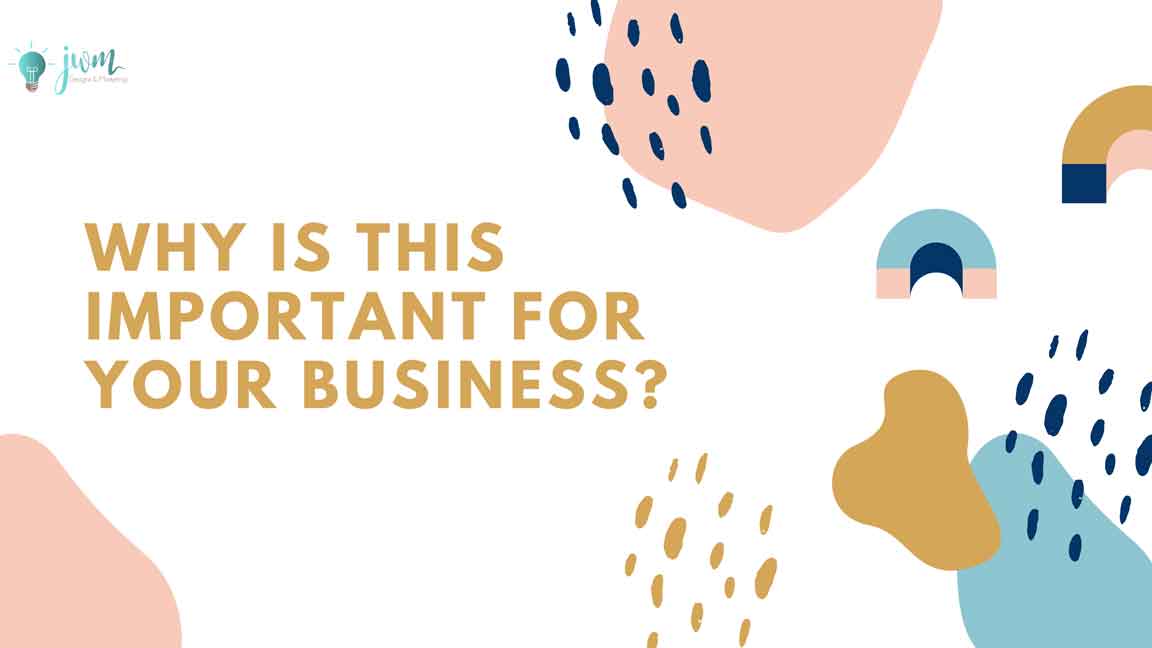Business Formation: The Five Things To Consider When Deciding How Formally Structure Your Company.
Formalizing the structure of your business is a major decision, but oftentimes new entrepreneurs don’t know where to start. In this post, I discuss business formation, and in particular, the five things I think every entrepreneur needs to consider when formally structuring their business. My goal in this post is to give you a general overview of the different business structures that are out there and get your mind moving on things that you need to consider when starting your business.
For some of you, you’ve been in business for a while selling crafts or apparel through your social media profiles, or you’ve been providing services like in-home cleaning or landscaping. For others, you may want to take advantage of the various programs targeted towards assisting small businesses during the Covid-19 pandemic, but you need to formalize your company so that you can take advantage of these programs. No matter what your reasons are for wanting to formally start your business, you know that if you want to take your business to the next level and it’s time to formally file the paperwork with your state to officially launch your company.
Why Now?

You may be asking yourself, “if I’ve already started selling goods or services, why do I need to file any paperwork to formalize my business? I’m already doing business.” While there are many reasons why I would suggest filing the paperwork and formally starting your business, the major reason is liability. While the Internet and social media have made it super easy for people to immediately start selling products and services to the general public, without the protections that having a formal business structure provides, you put yourself at considerable risk should something go wrong with the product or the service that you provide. You may even find yourself in court. One of the main benefits of formalizing your business is that for the most part, it separates you individually from the actions and liabilities of your company.
What are the main business structures?

Before we go too deeply into the five things you need to consider when deciding which business structure best works for your business, lets first go over the four main business structures that most small businesses and entrepreneurs pick from. They are sole proprietorship, partnership, limited liability company, and corporation. Now, within those four types of business structures, there are variations such as general partnerships or limited liability partnerships or c-corporations or s-corporations. For example, if you are a sole proprietor, you can only have one owner, (i.e. one proprietor) while with a partnership, you have to have at least two owners. Think about it, you can’t be a partner by yourself. You at least need two people involved. Additionally, if you’ve been operating your business but you haven’t filed any paperwork yet to formalize the structure, you are by default a sole proprietorship. While there are several options to choose from, don’t get intimidated by the options that are available. Just know that each structure has specific components that are unique to them and your choice should depend on what you plan to do with your business.
What Are The Five Things You Should Consider When Deciding On A Business Structure?

Purpose: The first thing you’ve got to consider when deciding how to structure your business is your purpose. What sort of product or service is your business going to provide? Is your business going to be in a highly regulated industry like banking or finance; or is it going to be in an industry that requires some sort of professional licensing, like accountants or lawyers? Will you eventually seek outside investment? More specifically, do you think your company might ever have an initial public offering of stock, (IPO). Do you expect to be the sole owner of your business, or will you take on co-owners/partners in the future? Do you plan to share any ownership interest in your company? The answer to these questions are all designed to get you to consider more than the here and now in your business because some business structures are more conducive to certain conditions than others. It is always best practice to contemplate these issues on the front-end of establishing your business, although it is true that you can change your business structure down the road. I am a proponent charting the course of your business early so that you don’t have to deal with the headache of trying to change course later. As an entrepreneur, you need to beyond the first year of your business; think about where you want to be 5, 10 years down the road. If you are really serious about transitioning from a full-time employee to a full-time entrepreneur, take the time to now to consider your company’s future. Once you have an idea or vision about where your company is going, you will be better equipped to answer the question about how your company will grow.

Size: The second thing every entrepreneur needs to consider when deciding how to formally structure their business is size. In terms of size, do you plan to hire right away or will it just be you working in the business? If the business does hire employees, will you offer an array of fringe benefits and incentives like healthcare or stock options? For your industry, what kind of specialized talent will your company require to attract in order to get the employees with the technical knowledge or skill-set needed for your business? Would it be better to hire independent contractors versus employees? Will you be starting this business alone or will you have other individuals joining you? These are all questions you should consider when thinking about the size of your company and the amount of help, if any, you will need when getting started. The size of your company may change over time as you settle into your business and you need to not only plan for it but make sure you are prepared for it when it happens.

Liability: The third, and in my opinion and the most important, thing to consider when deciding your business structure is liability. For instance, if your business is a sole proprietorship, you as the owner are liable for all unpaid debts, injuries, or damages incurred by the company. This means that your personal assets can be used to settle disputes should you be found at fault. Personally, this is my least favorite business structure because it offers no real protection for the owner. With general partnerships, while the partners (i.e. owners) are liable for unpaid debts, injuries, and damages caused by the business, unlike sole proprietors, partners can limit their share of any of the liability that happens as a result of the business. There are different ways to do that within the partnership structure, which are not available to those who are sole proprietors. With limited liability companies, just as the name implies, the members (i.e. owners) for the most part are protected from any unpaid debts, injuries, or damages that are incurred by the business. Even more so for corporations where liability is limited even more because the business is treated as a separate entity from its shareholders (i.e. owners). Suffice it to say that the issue of liability is important because, if left unprotected, a business owner will be held responsible for the actions of the business and if sued, their personal assets, such as their home or persona investments, can be used to settle the dispute. You’ve worked hard to create your business, but you also have a responsibility to protect the home front. What happens in your business should not be something that can be used to dismantle what you have built at home. If nothing else, protecting yourself from liability is the top reason why you want to formally structure your business.

Management: The fourth thing that every business owner and entrepreneur should consider when formalizing the structure of their business is how the business will be managed. And in particular, you want to think about how flexible you want management to be when it’s time to make major decisions in the company. Depending on the business structure that you choose, flexibility can be very limited. For example, the most flexible business structure is a sole proprietorship. This is mainly because the owner is the only person running the company and he or she can essentially do whatever they want with it. With this business structure, if a major decision needs to be made quickly, the owner does not have anyone else that he or she needs to get approval from before making a decision. Similarly, within a partnership, so long as the partners agree on the major management decision, then they, for the most part, can do what they want with the management of the company. Typically, partners craft “partnership agreements” that explain in detail how and who can make these sorts of decisions. Pro Tip: If you go into a partnership or any business where you’re a co-owner with others, be sure that they are not only trustworthy but also that they have the ability to separate the personal from the business. Be sure that it is clear from the beginning how major decisions in the business will be made and that the partners or co-owners are on equal footing in the management of the company. Also, decide what qualifies as a major decision and what does not. Similarly, the management of an LLC is mostly flexible, but it still requires some agreement among the members or co-owners of the company. With LLCs, you will need details in your founding documents for the business, the specific ways in which major decisions are made, and who makes those major decisions. Notably, if you are a single-member LLC (SMLLC), meaning that you are just the sole member (i.e. owner) of the LLC, then you can largely do what you want with the company. SMLLCs are similar to a sole proprietor but have certain formalized processes that govern how the business operates as opposed to a sole proprietorship where there typically aren’t any formalized rules or a way of making decisions. Whereas even with an SMLLC, you can still have an operating agreement that explains this is how decisions will be made in your company. Conversely, the least flexible system of management is a corporation. With corporations, there are very specific procedures for making decisions that involve shareholders and directors and require multiple meetings. This structure requires more steps to get decisions made which makes it much more difficult to be flexible in the management of your business. Corporations require additional documentation and an overall more formal process than all of the other business structures.

Taxation: The fifth thing that I think that all entrepreneurs need to consider when deciding how to formalize the structure of their business is taxation. Make no mistake about it, Uncle Sam always gets his money. No matter which structure you choose, your business will be subject to state and federal taxes. The real question is how you pay those taxes. That is, whether you pay taxes on your personal tax return or on a separate tax return. The answer to this question is completely dependent on the structure of the business that you choose. The issue of taxation is definitely something that you want to talk with an accountant or a business manager about to get a better understanding of this topic. Depending on the type of product or service that your business will provide, certain business structures would not be a good option for you. I don’t want to go too far on this topic in this blog post because your situation is unique to you and you should do your research to determine what fits best. What I want you to take away from this section is that you need to consider taxation when you’re thinking about how you want to structure your business.
Information Overload?

At this point, you’re probably thinking, “Jenn, this is just a lot of information and I don’t know where to start.” I get it. This list is heavy and it is not all-inclusive. These five topics are a good starting point for making this decision. There are a host of other things that you can and should consider when formalizing your business. My goal for this blog post is simply to introduce this topic to you, and get your gears going on the right path as to what you need to consider and why these things are important. No matter what, you’ve got to do your own research to better understand those four main business structures and the pros and cons of each based on your business needs and where you’re trying to take your business. While I encourage you to use the questions and topics that I mentioned as a guide to getting to your answers, ultimately, it’s going to come down to you making that decision for yourself.
Still Questioning Whether This Is A Necessary Step?
If my words regarding liability didn’t spark any interest in you to formalize your business, consider this: some customers or established companies that might be interested in your product or services won’t consider working with you if they aren’t confident that your business is going to last. How many times have you seen someone selling a product or service online one day and then weeks or months later you can’t find them or they’ve moved on? If you really want your company to take the place of your full-time job and you want your business to be taken seriously by prospective clients and other businesses, (which could lead to more money, more consistency and a better life overall), then you’ve got to make that tough decision of formalizing your business. Do what is necessary to take your business to the next level. If not, you might as well just stay an employee with a side hustle.
Let’s Recap

We’ve already talked about the four main business structures that you can consider when deciding how to formalize your business. You’ve got a sole proprietorship, a partnership, a limited liability company, and a corporation. Each structure has specific components and pros and cons, depending on your business needs. When considering which structure best works for your business, remember to think about: (1) the purpose of your business and what products or service are you going to provide; (2) what is the size of your business and how do you plan on growing it; (3) how you want your business to be managed; (4) taxation; and (4) most importantly, liability and how to protect yourself and your personal assets. I urge you to do your research and get comfortable with understanding the pros and cons of each of these different business structures and how they best relate to what you’re trying to do in your business.
Action Steps

Your action steps are to do your research. Research. . . Research. . . Research, the different business structures that are out there. Look at the pros and cons and then make a decision. Talk to your advisors. Whether it’s a business manager, a lawyer, trusted friends, family, whoever, you need to make a decision and then get moving. Take your business to that next level. If you want your business to be taken seriously by other businesses and by potential customers, it’s time to take that step and to formalize your business. After reading this post, you now have new tools in your arsenal to be able to do just that. I am all about growing your business and I’m super excited about building your legacy. Together, we are Legacy Builders. So let’s build together.






